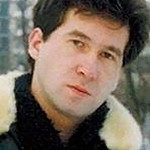Wetland pond in the territory of the “Mshinskoye Boloto” sanctuary, Leningrad region, Russia
67th place in Biotope Aquarium Design Contest 2018
![]() Russia. Anton Khristenko
Russia. Anton Khristenko

Volume: 204 L
Dimensions: 73x56x50 cm
List of fishes: Pelophylax lessonae
List of plants: Sphagnum sp., Polytrichum commune
Description of decorations: Driftwood: small pine branches, in shape and color similar to those presented in the nature biotope; fine sand taken from the natural reservoir; leaf litter.
Description of equipment: Tetra Tetronic LED lamp, filter ASAP 500 AquaEl.
Water parameters: The temperature is 17-23°С, pH is 7.5, KH is 4.
INFORMATION ABOUT BIOTOPE
Description of the area surrounding the biotope: The area of the Mshinskoe Boloto reserve is more than 69 thousand hectares, and 9 thousand hectares are occupied by lakes, the largest of which are Strechno and Vyalye. The natural complex also includes the Glukhoe, Mochalishche, Oseika, Litvino lakes, high bogs, which are a kind of lake frame, divers lakes, sources of the Rakitinka and (South) Zhelezyanka rivers. The reserve’s territory covers the area in the watershed of the Oredezh and Yashcher rivers. On the map you can see that the reserve has an elongated shape in the meridional direction. The massif consists of 10 ridge lake swamps and separately located swamps, in which heather and Rhynchospora alba grow abundantly. A small part of the reserve is occupied by swamps with pine, shrub and sphagnum. The northwest of the reserve is located under the meso-trophic massifs of the swamps with Eriophorum, Menyanthaceae and sphagnum, surrounded by a swampy areas with Alnus glutinosa along the coast. There are black alder swamps on the southern border of the land. Molosovo lakes in the southeast of the massif are surrounded by several eutrophic swamps, covered with hypnum mosses, black alder, grasses, sorrel, marigolds, and orchids (Epipactis palustris and Liparis loeselii). The flora of the lakes is diverse. Here there are thickets of horsetail, sphagnum, reeds, cattails, floating pondweed, Nuphar, Sparganium erectum, water lilies and Najas.
Description of the underwater landscape of the biotope: The substrate is a slightly silty sand. Since the pond is located on the outskirts of the forest, the bottom is covered with leaf litter, there are branches and driftwood.
Description of the parameters of the habitat: The water is turbid. The average water temperature is 13.5°C, but in the warm season it rises to 22°C, pH is 6.5–7, KH is 4.
List of fishes and invertebrates occurring in the nature biotope: Dendrocoelum lacteum, Nephelis vulgaris, Glossiphonia complanate, Ovata sp., Lymnaea stagnalis, Gordius aquaticus, Asellus aquaticus, Daphnia pulex, Argyroneta aquatic, Hydracarina, Aeschna sp., Libellula sp., Calopteryx sp., Potamanthus luteus, Nemura variegate, Notonecta glauca, Nepa cinerea, Dytiscus marginalis, Culex pipiens, Dixa amphibia, Chironomidae sp., Eristalis tenax.
List of plants found in the nature biotope: Charophyta sp. There are no plants there.
Threats to the ecology: On the territory of two neighboring districts, Gatchina and Luga, between four settlements: Mshinskaya, Chashcha, Torkovichi and Divenskaya, the federal complex reserve Mshinskoye Boloto is located. The reserve was founded after the resolution of the Leninsky Regional Executive Committee on March 29, 1976. The main purpose of its creation is to protect intact the largest marsh massif of the Leningrad Region, which includes seven lakes and where the sources of eight rivers are located. In the early 80s, the reserve was transformed into the republican one, and in 1994, by a decree of the Government of Russia, the Mshinskaya swamp system was attached to wetlands of international importance.
Sources of information:
www.rus-nature.ru/09water/
oopt.aari.ru/oopt/Мшинское-
Comments of the members of the jury of Biotope Aquarium Design Contest 2018

Daring and difficult entry in terms of its design. Moreover, the mushroom is real and it grew until it decayed naturally. I saw this aquaterrarium live. The moss is green, the frogs look healthy and cheerful. I can add that in Russia there are small swamps that dry up completely when it is hot. There are no fish in such reservoirs. But there are a lot of invertebrates and frogs, which lay eggs there and start loud mating croaks.
